A full-face snorkel mask can make learning to swim less stressful. Since the mask keeps water away from your face and lets you breathe normally, you might find it easier to practice basic water skills. But it's important to know what these masks can and can't do for your swimming journey. This guide covers how to use a full-face snorkel mask safely while you learn swimming basics.

What Full-Face Snorkel Masks Can and Cannot Do
Full-face snorkel masks work well as learning tools for new swimmers, but they have specific uses and limits. Knowing these will help you use them effectively and safely in your swimming practice.
Three Main Benefits for Beginners
1. Easier Breathing in Water
The mask creates a protective barrier that keeps water away from your nose and mouth, letting you breathe normally through either one. This means you can focus on moving in the water instead of worrying about breathing. Many swimmers find this single feature makes their first water experiences much more pleasant.
2. Better Comfort and Visibility
The mask gives you a clear view underwater while keeping your face dry and comfortable. No more stinging eyes or water up your nose - two common issues that often make new swimmers nervous. The wide viewing area also helps you stay oriented and move confidently at the surface.
3. Reduced Water Anxiety
A full-face mask can significantly reduce stress for anxious swimmers. When you don't have to worry about water splashing your face or interrupting your breathing, you can concentrate on basic movements and gradually build your confidence in the water.
Important Limitations to Remember
1. Won't Help with Proper Swimming Strokes
The mask actually makes it harder to learn correct swimming form. It blocks the natural head movements needed for freestyle and other strokes, and can lead to poor technique if used during stroke training.
2. Not Safe for Certain Activities
These masks work only for surface swimming in calm, shallow water. They're not designed for diving, deep water swimming, or any underwater activities. Using them beyond their intended purpose creates serious safety risks.
3. Won't Teach Advanced Skills
Advanced swimming requires skills that you can't develop while wearing a full-face mask. Skills like treading water, proper breathing techniques, and swimming underwater need to be learned without the mask. The mask serves as a temporary aid, similar to training wheels on a bike - helpful at first, but eventually you'll need to swim without it.

Safety Guidelines for Using Full-Face Snorkel Masks
Your safety in the water depends heavily on proper equipment and knowing basic safety rules. Top snorkeling masks and clear safety practices can prevent most common problems before they occur.
How to Pick the Right Mask
1. Getting the Correct Size
A mask that's too big or too small can leak or feel uncomfortable. Measure your face from your hairline to the bottom of your chin, and match this to the manufacturer's size chart. The mask should cover from your forehead to below your chin without gaps.
2. Testing the Fit
Put the mask on and adjust the straps until it sits snugly but not too tight. Take a deep breath - a proper fit creates a slight suction. Move your head side to side and up and down. The mask shouldn't shift or let water in during these movements.
3. Checking Mask Quality
Buy masks from reputable manufacturers with good safety records. Look for solid construction, clear viewing areas, and reliable breathing valves. Avoid cheap masks that might break or leak during use.
Key Safety Rules to Follow
1. Never Swim Alone
Always swim with someone watching you when using a full face diving mask. This person should stay close enough to help if needed and know how to respond to problems.
2. Stay in Safe Waters
Keep to shallow areas where you can stand up easily. Avoid rough water, strong currents, or crowded swimming areas. The water should be calm and clear enough to see through.
3. Limit Your Swimming Time
Take regular breaks every 20-30 minutes. This helps prevent fatigue and gives you time to check your mask's fit. If you feel tired or uncomfortable, get out of the water right away.
How to Handle Emergency Situations
1. Removing the Mask Quickly
Practice taking off your mask both in and out of the water. The straps should release easily with one hand. Learn to remove the mask while keeping your face above water.
2. Calling for Help
Stay calm if you have trouble. Hold onto something that floats if possible. Wave one arm and call out to get attention. Make sure your swimming partner knows these distress signals.
3. Basic Water Safety Skills
Even with a mask, you need basic water safety knowledge. Learn how to float on your back and move toward safety. Know where the shallow areas are and always check water conditions before entering.

How to Learn to Swim With a Full-Face Snorkel Mask
Learning to swim with a snorkel mask works best when you follow clear steps. Here's how to start safely and build your water skills day by day.
Step 1: Get Familiar With Your Mask at Home
Try your mask at home first. Put it on and breathe normally for 5-10 minutes. Look around, move your head, and talk. These simple actions help you get used to how the mask sits on your face and how it feels to breathe through it.
Make sure the straps feel snug but not tight. Practice taking the mask on and off quickly. Move your head in all directions to test the seal. A well-fitted mask won't slip or let air leak out.
Breathe through both your nose and mouth. Notice how air flows through the mask. Practice breathing slowly and steadily. This helps you stay calm when you get in the water.
Step 2: Try Your Mask in Shallow Water
Stand where the water reaches your knees. Splash your face while wearing the mask. Bend down to put just your face in the water for a few seconds. Get used to seeing through the mask underwater.
Hold the pool edge. Lower your face into the water and lift it out several times. Take regular breaths through the mask. Stay in this position until it feels natural.
Keep your face in the water for longer periods. Count to three as you breathe in, then three as you breathe out. If the mask fogs up, slow your breathing. Stay calm and relaxed.
Step 3: Learn Basic Swimming Movements
Hold the pool edge with both hands. Let your legs float up behind you. Keep your face in the water and breathe steadily. When comfortable, try letting go briefly.
While holding the edge, make small, steady kicks. Keep legs mostly straight but relaxed. Watch your kicks through your mask. Practice until your movements feel smooth.
Practice one arm at a time while holding the edge. Reach forward and pull back through the water. Switch arms. When ready, use a kickboard and try moving both arms while kicking.
Take a 5-minute break after every 15 minutes of practice. Build your skills gradually over several sessions rather than trying to learn everything at once.

When to Use and When to Stop Using Your Snorkel Mask
A full-face snorkel mask is a temporary learning tool. Knowing when to use it and when to move beyond it will help you become a better swimmer.
Good Times to Use Your Mask
1. Getting Started in Water
Your first few pool sessions work well with a mask. Use it to practice putting your face in the water, floating, and basic movements. The mask helps reduce common fears about water touching your face or going up your nose.
2. Building Water Skills
Continue using the mask while learning to float and kick. The clear view and easy breathing let you focus on body position and movement. Practice in chest-deep water where you can stand if needed.
3. Fun Family Swimming
Casual swimming and water play with family can include mask use. Explore the pool bottom, watch others swim underwater, or play simple water games. These activities build water confidence naturally.
Time to Move to Regular Swimming
1. Watch for These Ready Signals
- You feel completely comfortable with your face in water
- You can float and kick confidently
- You no longer feel anxious about breathing
- You want to swim faster or dive underwater
2. Making the Switch
Start removing your mask for short periods. Try putting your face in water without it. Practice blowing bubbles and opening your eyes underwater. Use regular goggles for a few minutes at a time.
3. Getting Extra Help
Consider taking proper swimming lessons at this stage. A qualified instructor can:
- Teach correct swimming strokes
- Fix any bad habits from mask use
- Help you learn proper breathing techniques
- Guide you through water safety skills
Take short steps when switching from mask to regular swimming. Spend a few sessions using both the mask and regular goggles until you feel fully confident without the mask.
Take Your First Steps in Water with the Right Full-Face Snorkel Mask!
A full-face snorkel mask can help you get started with swimming more comfortably. The mask makes it easier to breathe and see underwater while learning basic skills. With proper safety steps and regular practice, you'll build confidence in the water. Soon enough, you'll be ready to move from the mask to regular swimming - just like taking off training wheels from a bike.

FAQs About Learning to Swim with a Full-Face Snorkel Mask
Q: Can you learn to swim with a snorkel mask?
Yes, you can use a full-face snorkel mask as a learning tool when first starting to swim. The mask helps beginners feel more comfortable in the water since it keeps water away from your face and allows normal breathing. However, it's important to understand that the mask is only a temporary aid, like training wheels on a bicycle. While it's great for learning basic water comfort, floating, and kicking skills, you'll need to transition away from the mask to learn proper swimming strokes and advanced techniques. The mask should be used mainly in the early stages of learning to build confidence and basic water skills.
Q: Can you submerge with a full face snorkel mask?
No, full-face snorkel masks are not designed for submersion or underwater swimming. They are specifically meant for surface swimming in calm, shallow water only. Attempting to dive or swim underwater with these masks can be dangerous. The masks are built for floating and swimming while keeping your face at or near the surface, where the snorkel portion can remain above water for breathing. For any underwater activities or deeper swimming, you'll need different equipment designed for that purpose.
Q: Can you breathe through your nose with a full face snorkel mask?
Yes, one of the main advantages of a full-face snorkel mask is that it allows you to breathe naturally through both your nose and mouth. Unlike traditional snorkel gear that requires breathing only through your mouth, these masks create a sealed space around your entire face that lets you breathe normally. This feature makes the experience much more comfortable and less stressful for beginners, as you don't have to learn a new breathing technique. Just remember to take steady, calm breaths to prevent the mask from fogging up.
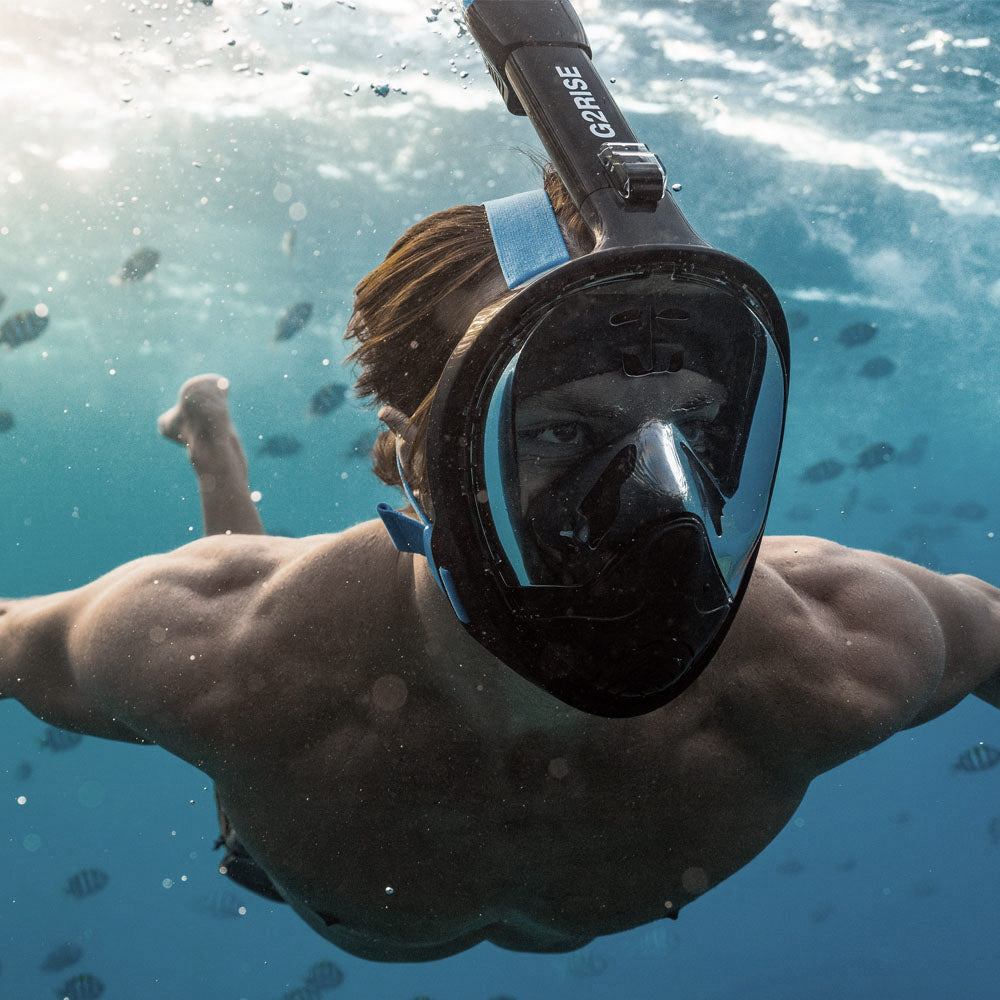
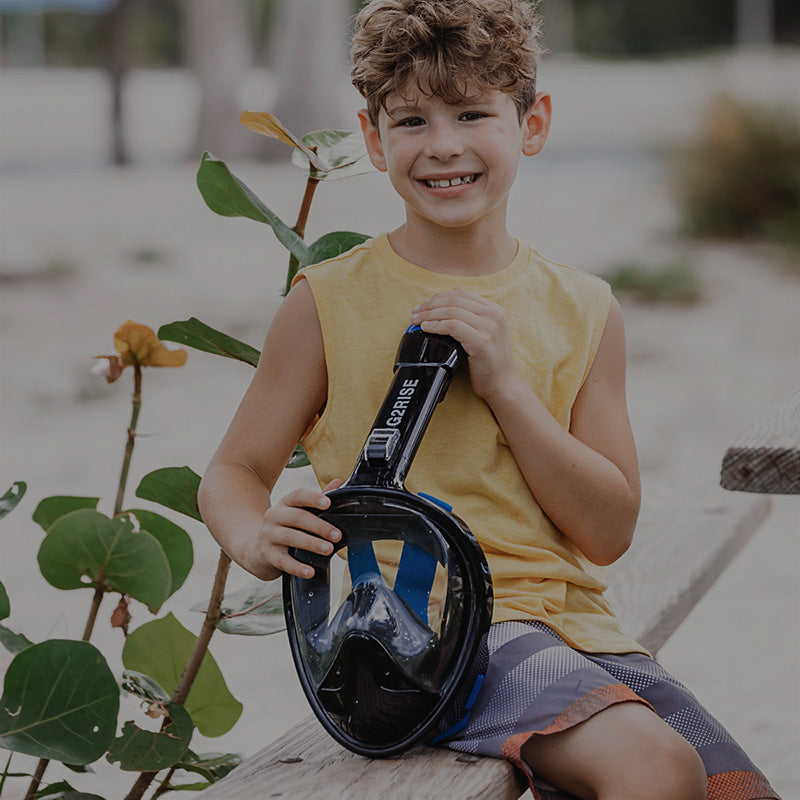

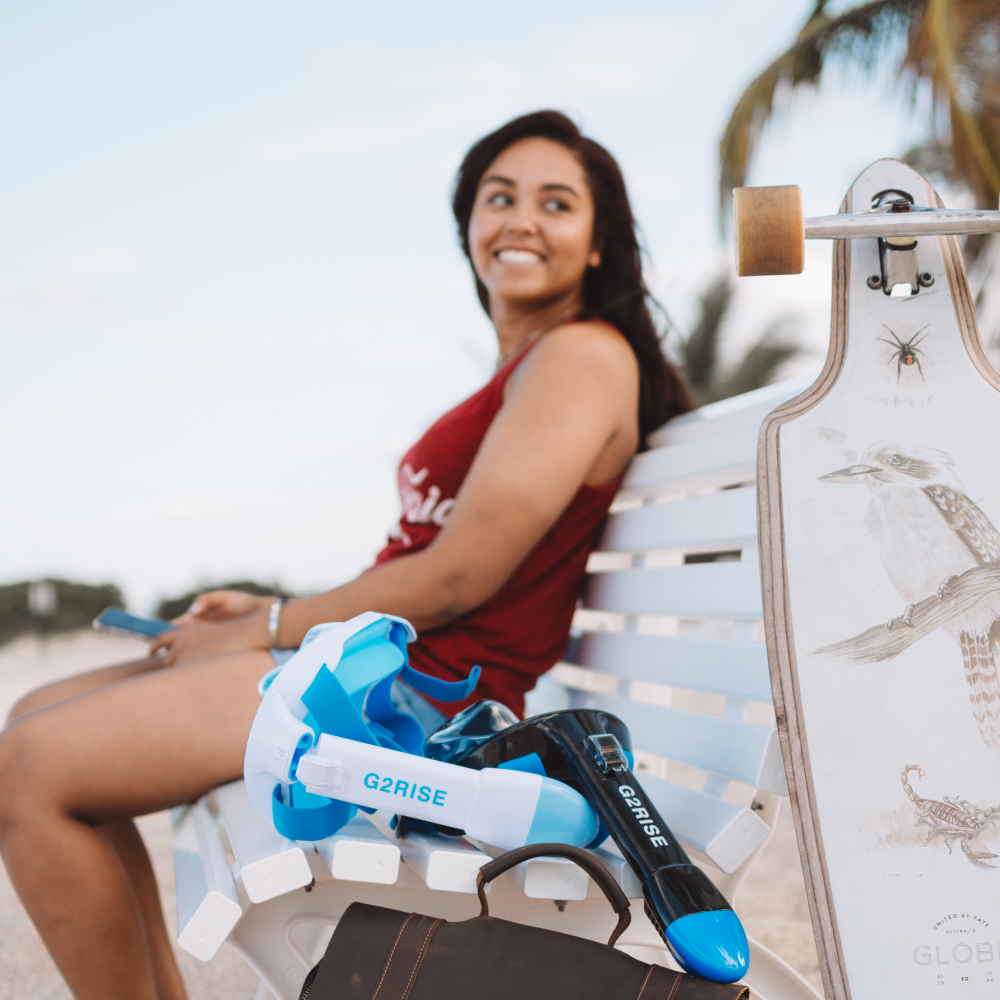
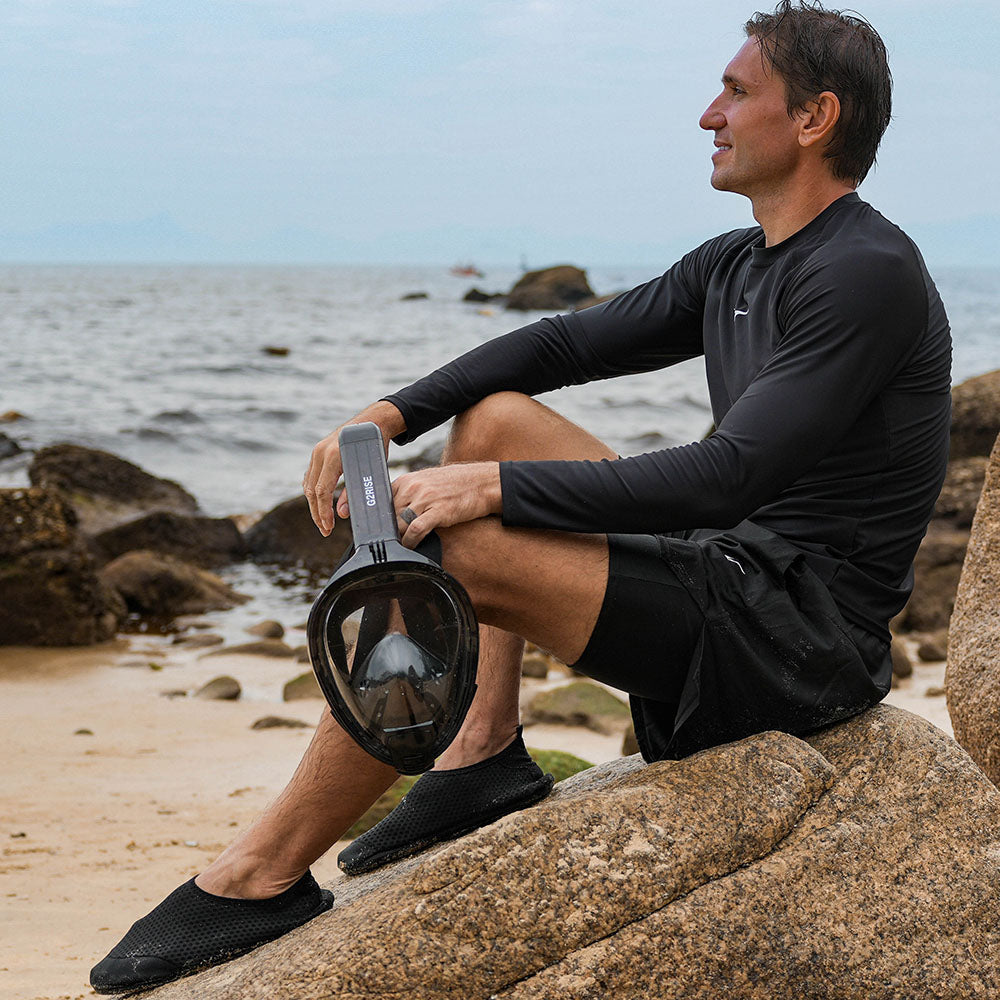


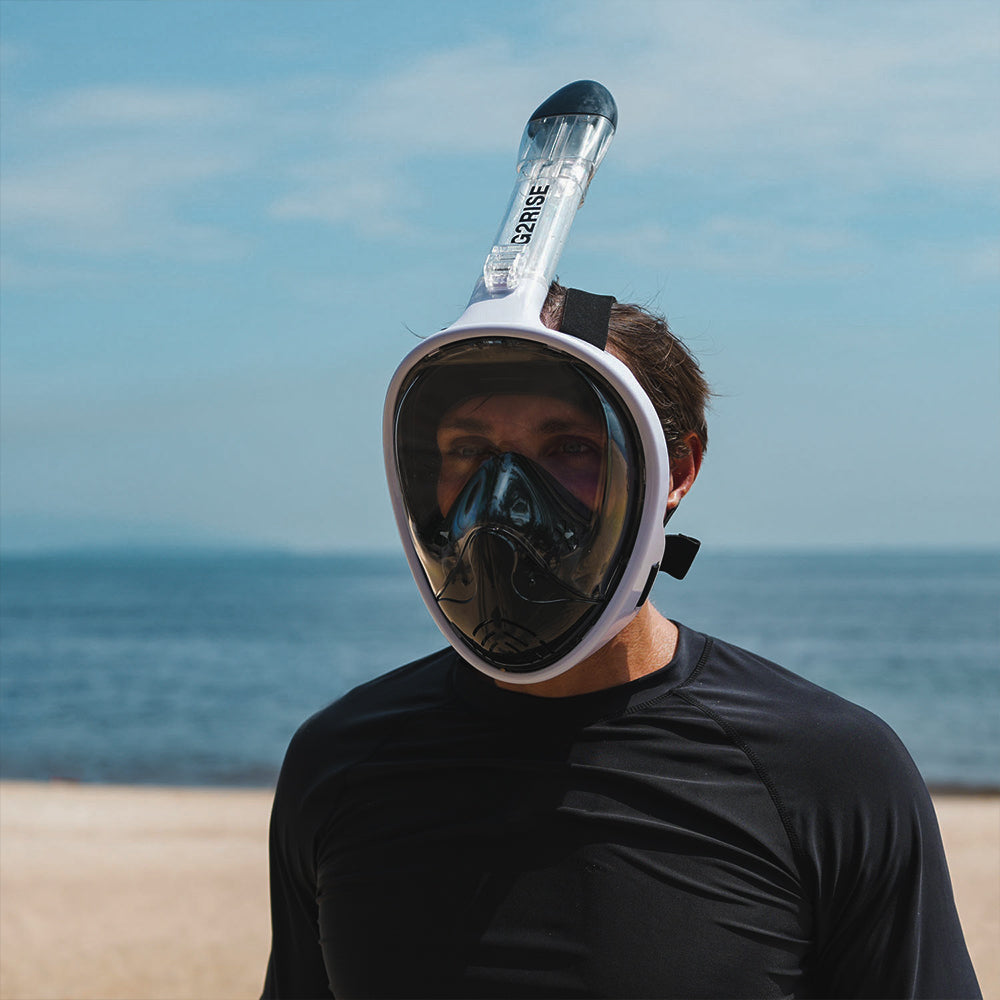
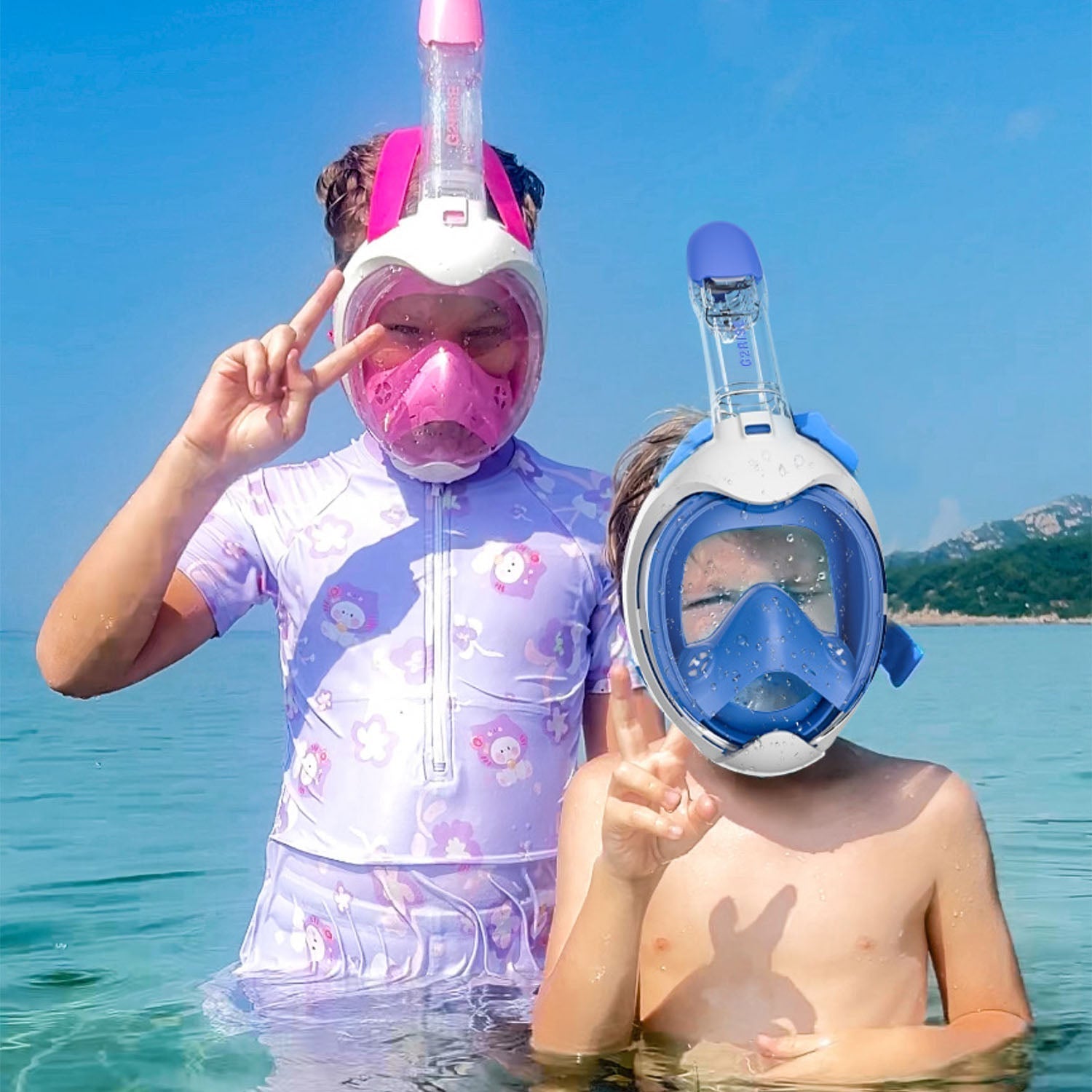
Leave a comment
This site is protected by hCaptcha and the hCaptcha Privacy Policy and Terms of Service apply.